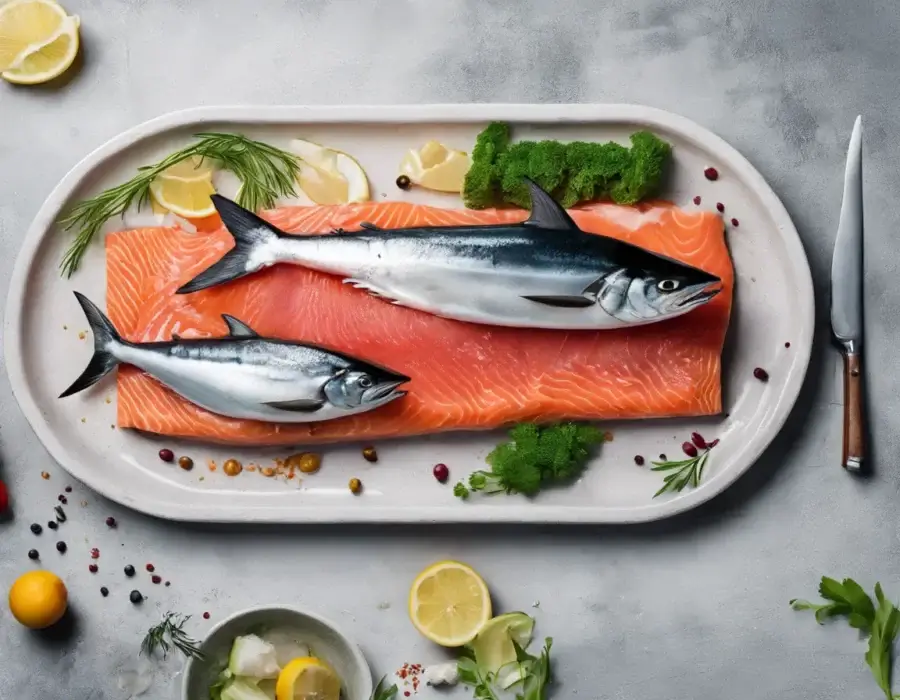Dive into the ultimate showdown — tuna vs salmon — and discover the secrets to selecting the freshest catch for your next meal!
Freshness First

Fresh tuna should boast a bright, deep pink or red color, while fresh salmon flaunts a vivid orange or deep pink. It’s all in the hue!
Fresh tuna and salmon should smell clean and slightly briny, like the sea. Any strong fishy smell is a red flag, signaling it’s time to choose something else.
Texture also tells a tale in the quest for the freshest catch. For both tuna and salmon, seek out firm, moist flesh that springs back when gently pressed.
Color Clues
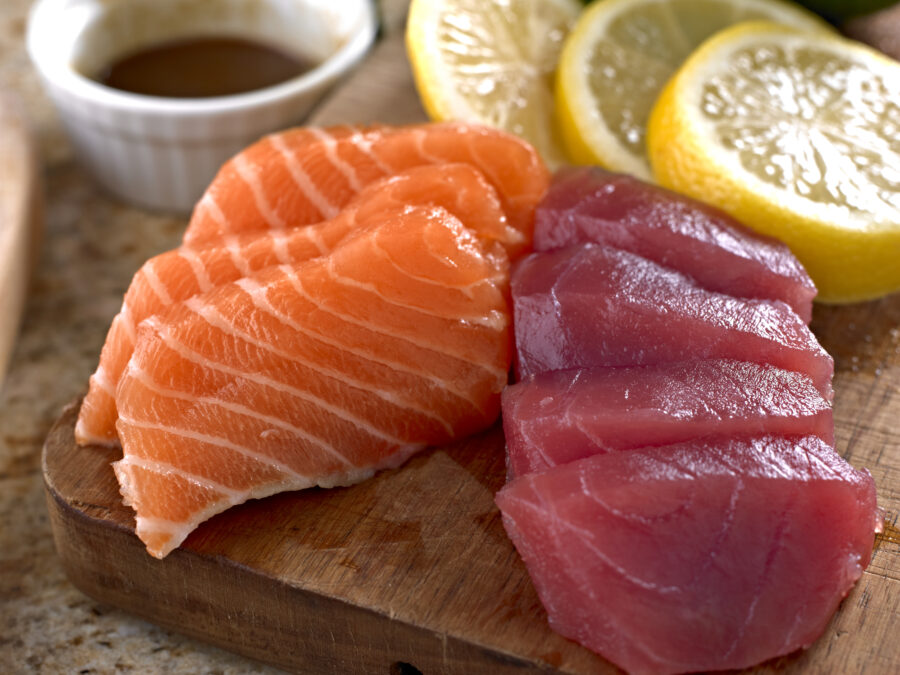
Ever pondered the vibrant hues of tuna vs salmon at your local market? Well, those colors are a sneak peek into the fish’s quality.
Bright, deep red tuna suggests it’s fresh from the sea, bursting with flavor. Salmon’s color palette can range from soft pink to deep orange.
A vibrant color usually indicates a high-quality catch, packed with omega-3s. However, some salmon are dyed to enhance their appeal. Your best bet? Look for wild-caught fish.
Texture Tells

As we touched upon earlier, texture is a huge tell-tale sign of freshness. Let’s dive into the details. Fresh tuna should feel almost steak-like.
If it feels mushy or overly soft, you should pass. Fresh salmon is less like steak, slightly springy to the touch, and hold together well.
If it’s starting to flake apart or feels slimy, it’s a clear signal that it’s past its prime. Trust your touch and ensure you’re getting the best catch!
Smell Secrets
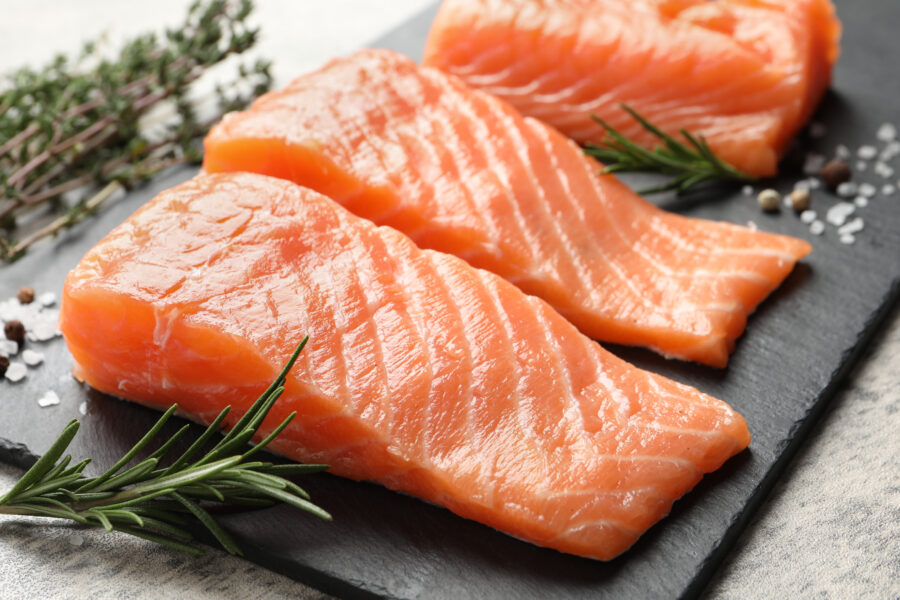
Scent is another telltale sign of freshness. A fresh tuna should smell briny like the sea, not fishy, guiding you to the best catch.
Fresh salmon should have a clean, slightly oceanic scent, with no hint of ammonia. This is a crucial tip for those navigating the tuna vs salmon waters.
Beyond freshness, the aroma can hint at the fat content, which influences flavor and texture. A richer, slightly sweeter scent often indicates a fattier fish.
Eyes on the Prize
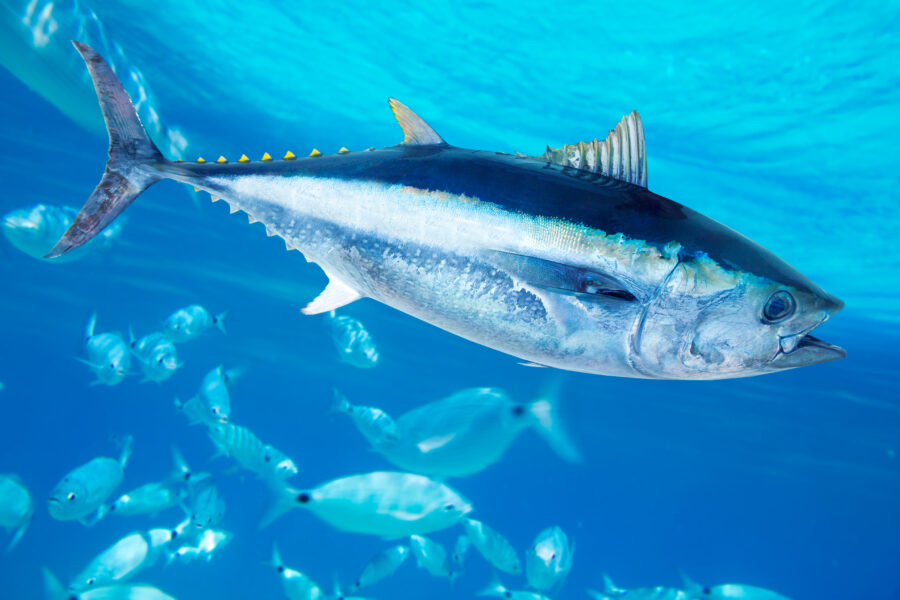
When it comes to discerning your seafood’s freshness, the eyes tell all. A bright, clear eye is a sign of an ultra-fresh fish.
Tuna should have dark, clear eyes that shine like polished onyx. Salmon flaunts a lighter, often golden eye, gleaming with freshness and vitality.
Cloudy or sunken eyes? It’s best to steer clear. But if those eyes are sparkling with marine secrets, you’re in for a quality treat.
Gill Game

Ever wondered what the gills can reveal about freshness? When it comes to tuna vs salmon, peeking at their gills can be quite the reveal.
Fresh tuna should boast bright red gills. A healthy salmon will have deep red or orange gills. It’s a simple check that speaks volumes.
Next time you’re eyeing up tuna or salmon at the market, remember, the gills tell all. Not just a matter of color, but of vitality and health.
Seasonal Savvy
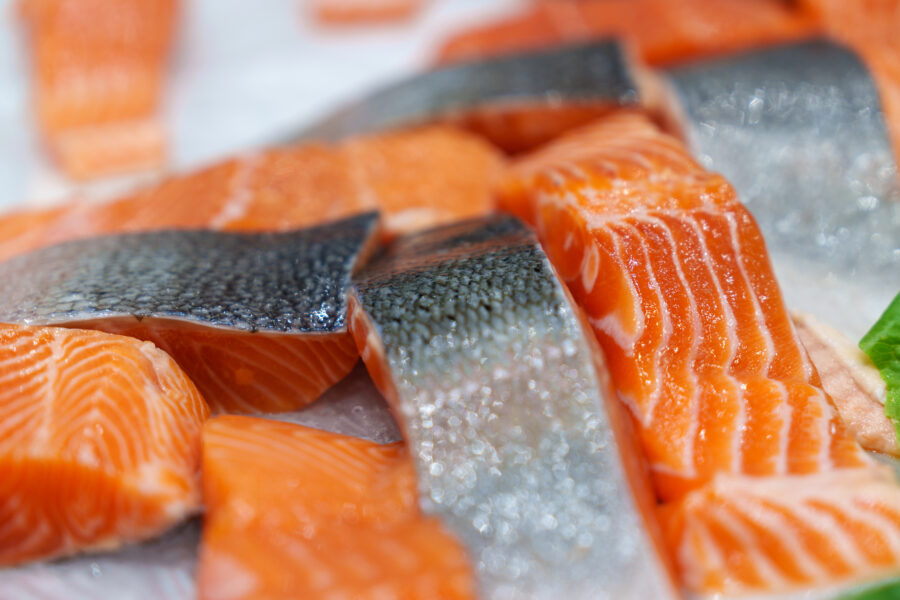
Tuna, thriving in warmer waters, means their peak season varies globally. So, if you’re craving that fresh tuna steak, summer months are usually your best bet.
Salmon has its own calendar. Wild salmon seasons, especially for those keen on Alaskan varieties, span from late spring through summer. Farm-raised salmon is pretty consistent year-round.
Seasonal savvy means enjoying these delicious fish at their best! Make sure to keep an eye on the specific type of tuna (or salmon), too.
Origin Insights
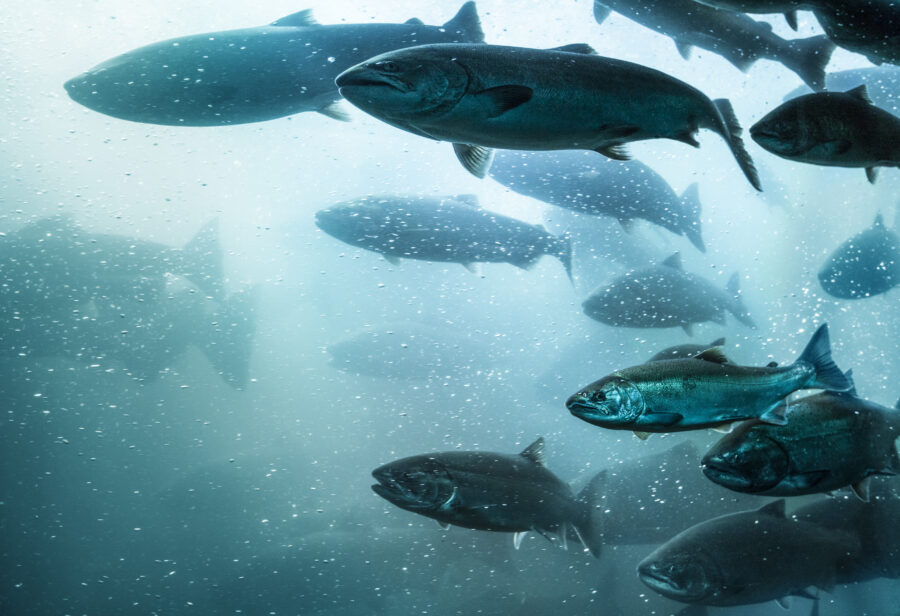
Dive deeper into the tuna vs salmon debate, and you’ll find that the waters they swim in, dictate their flavor profile. The journey from ocean to plate matters.
Salmon from the cold waters of Alaska, often has a rich, buttery flavor. The best tuna often hail from the Pacific, where they grow fat and flavorful.
Each fish’s origin story adds a chapter to its flavor, making the dining experience more than just a meal. It’s a journey through the waters they once called home.
Eco-Ethics

Did you know that how they’re fished matters just as much? Sustainable fishing practices ensure these fish can continue to thrive in the wild, keeping our planet healthy.
Sustainable fishing for salmon often involves careful monitoring of their populations and habitats. This ensures that we don’t take more than the ecosystem can replenish.
Tuna, with its global demand, faces significant overfishing challenges. Choosing tuna from sources that use methods like pole-and-line fishing can make a big difference.
Store Smarts
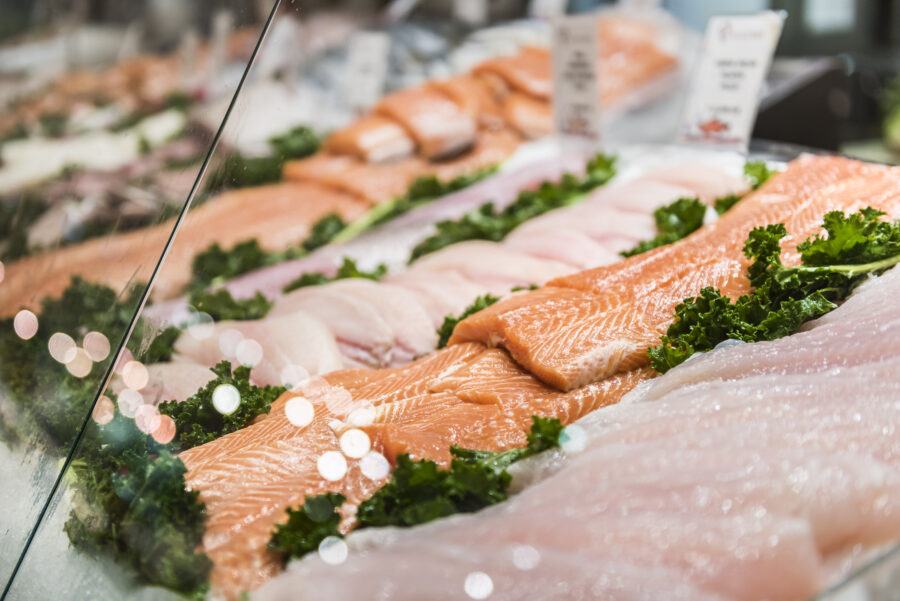
The key to choosing the freshest tuna is looking for bright, almost translucent flesh. A dull or brownish hue? Best to steer your cart away.
Fresh salmon should boast vibrant, deep orange or pink flesh with clear, tight lines. That’s the fat content, and it’s a good thing!
If the salmon looks faded or dry, it’s probably been on the journey for too long. Now you know a key indicator of freshness for tuna vs salmon.
Price Points

When pondering tuna vs salmon, it’s fascinating to note that their prices aren’t just random numbers. Higher prices often promise unparalleled freshness and a taste that lingers.
The price tag can also hint at the care and method of catch. Sustainable fishing practices and responsible aquaculture don’t come cheap, but they promise a guilt-free feast.
With salmon, wild-caught Alaskan might fetch a premium over farmed Atlantic. As for tuna, the majestic bluefin often wears the crown, price-wise, for its rich flavor and texture.
Prep Perks

Why are sushi chefs so particular about the presentation of tuna vs salmon? It’s not just for Instagram. The color, texture, and cut shout volumes about freshness.
When it comes to tuna, the firmness and how it’s sliced can also tell you if it’s fresh or not. This attention to detail ensures that every bite is as delectable as it is Instagram-worthy.
A glossy sheen and a smooth, buttery texture are your go-tos for assessing salmon quality. These prep perks are about savoring the peak of seafood freshness.
Label Lore
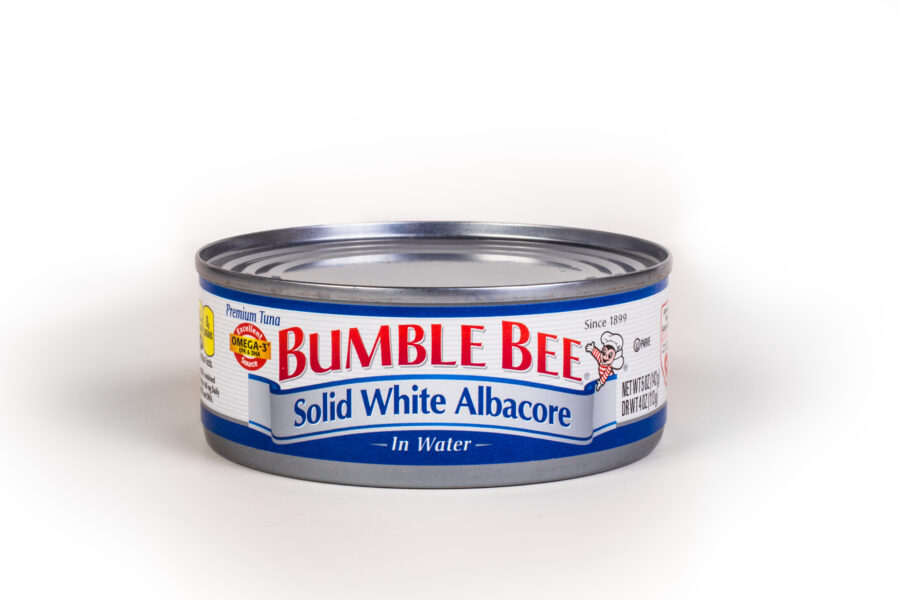
Reading labels isn’t just about checking the expiry date. It’s about unlocking the secrets to freshness, origin, and so much more. Let’s dive deep into label lore.
Choosing between tuna vs salmon can be a sea of confusion. But fear not! Labels are your treasure map to making informed choices.
Labels show nutritional content, letting you weigh the health benefits of each. They’ll tell you the omega-3 and mercury content, as well as the fish’s origin.
Wild vs Farmed

Wild fish swim freely, feasting on a natural diet, which can lead to a fresher, more authentic flavor profile. It’s the taste of the ocean, unaltered and bold.
Farmed fish, on the other hand, are raised in controlled environments. This isn’t necessarily bad! It allows for a consistent product in terms of size and flavor.
Here’s the catch (pun intended) — freshness isn’t just about wild vs farmed. Proper storage and transportation are key. Tuna and salmon can be equally fresh if treated carefully.
Chef’s Choice
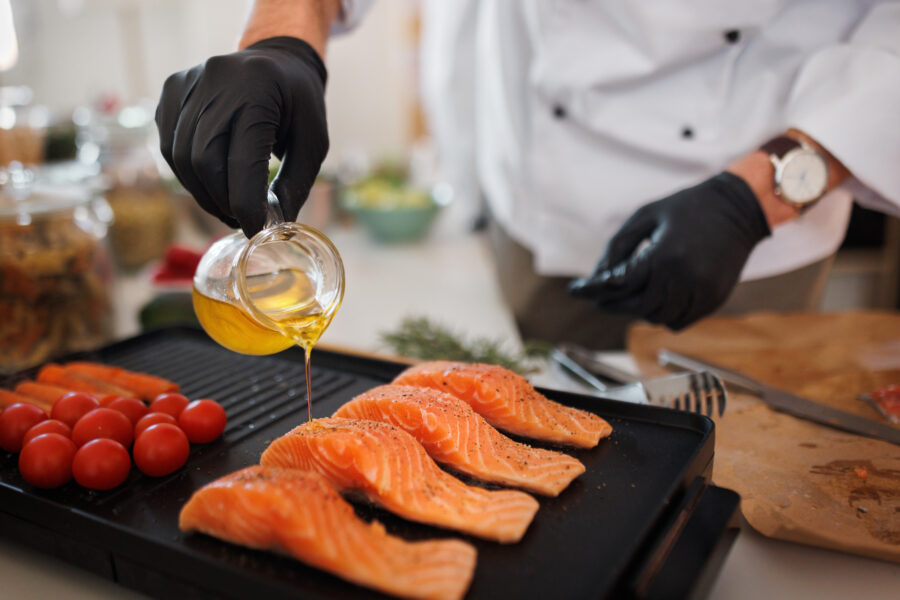
Chefs have their secrets for picking the freshest options. This might surprise you, but they’re pretty much the same as everyone else’s.
Texture plays a huge role in determining quality. Chefs employ tactile tests, looking for firm and tender flesh that springs back when gently pressed.
Color is another tell-tale sign chefs rely on. Vibrant reds for tuna and rich pinks to deep oranges for salmon suggest the fish is at its peak.
Tuna vs. Salmon: Nutrition
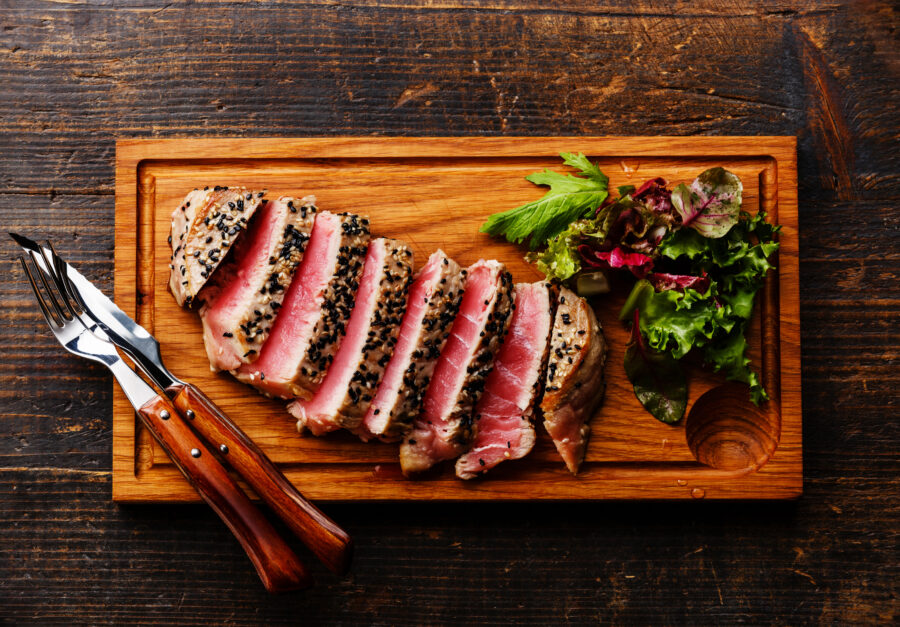
Now that we’ve gone over how to check for freshness, let’s move on to nutrition. Are tuna healthier than salmon, or is it the other way around?
Well, it depends on the kind of nutrients you’re looking for (and the kind of fish you’re eating). Yellowfin tuna, according to Healthline, is low in fat.
It’s also high in protein and selenium. Salmon is higher in fat and calories, but has a lot more omega-3s and vitamin D.
Hydration Hints
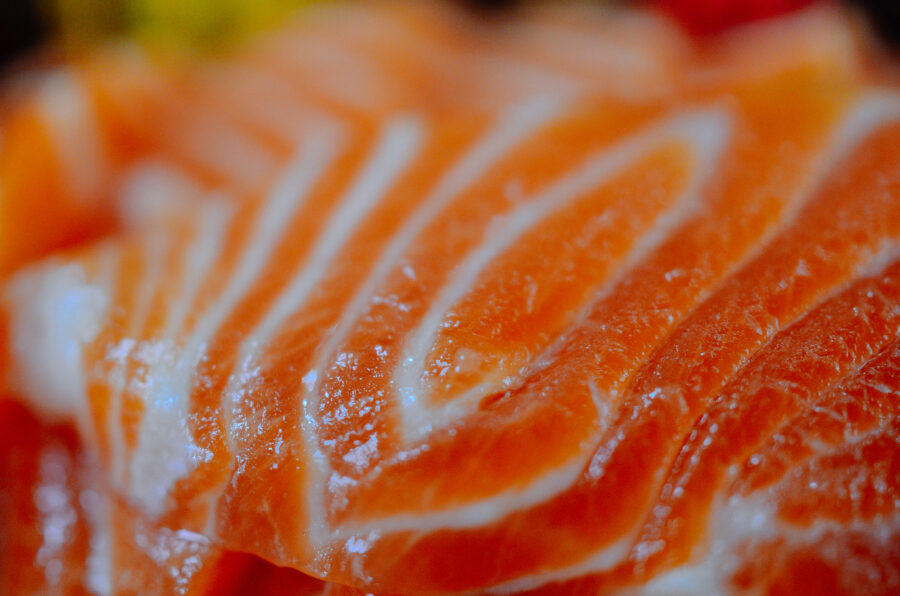
Both tuna fish and salmon are on the moist side. Salmon is generally more moist than tuna, with about a 70% water content.
Tuna fish has slightly less, at around 69%. Unless the fish is purposefully dried out into jerky, then it should taste at least somewhat moist.
In all honesty, though, “somewhat” doesn’t really cut it. Both tuna and salmon should taste moist when you take a bite out of them.
Storing Leftovers
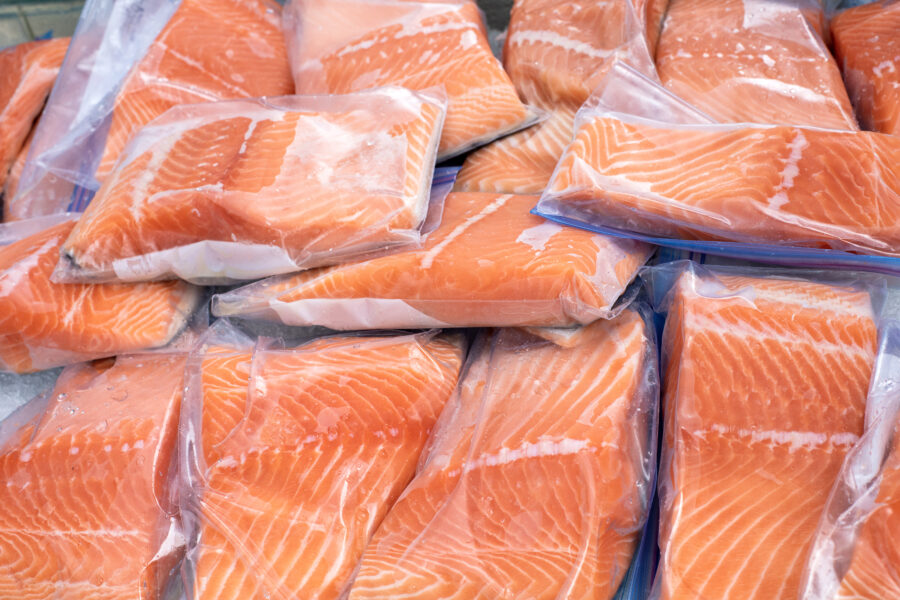
When it comes to any food (especially when we’re talking seafood), proper storage is super important. So, how do you store tuna vs salmon leftovers?
With both of these foods, you’ll need an airtight container. Once sealed, put them in the fridge. You can leave them in there for a few days, max.
Canned tuna is a different story. An opened can lasts for the same amount of time, though it can last months if unopened.
Certifications Check
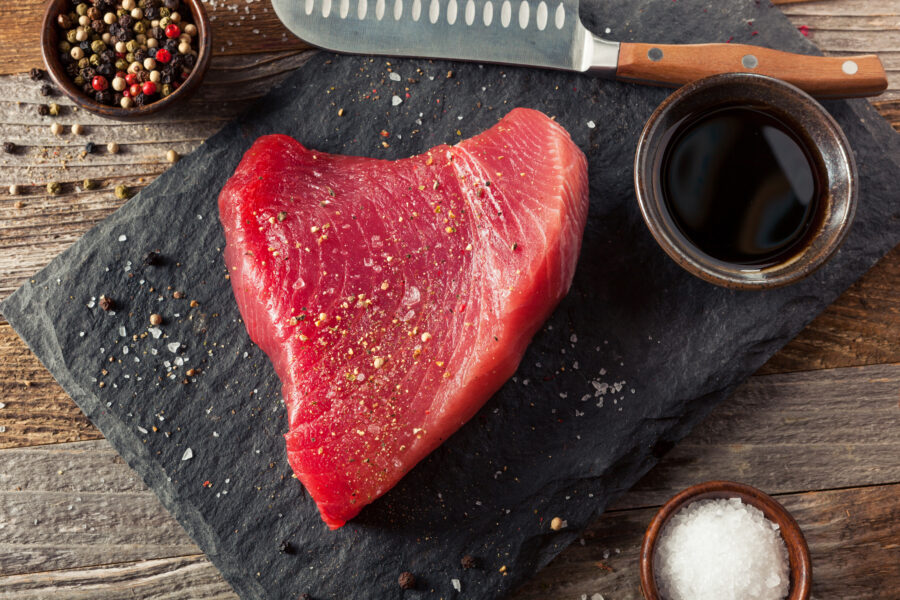
When looking at the labels of certain fish, you might notice several acronyms. Those stand for certifications given by different organizations, and have various meanings.
One such certification is given by the Marine Stewardship Council. An MSC certified product will have a blue label, signifying that it comes from a sustainable fishery.
The Best Aquaculture Practices organization also gives certifications for similar reasons. A BAP certification shows that the fish are farmed sustainably and the workers are treated fairly.
Regional Varieties
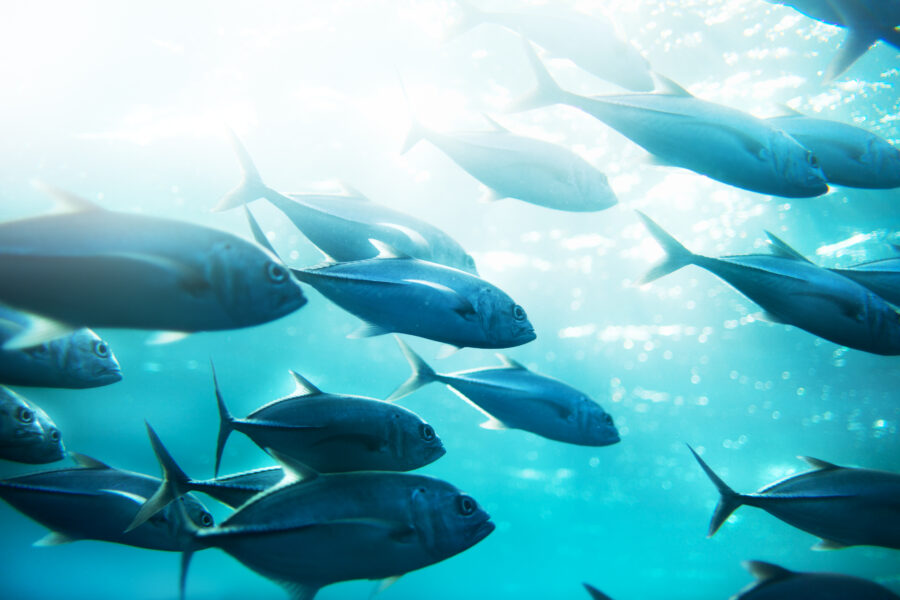
As you’ve probably guessed by now, there’s lots of different kinds of tuna and salmon. Bluefin tuna is the priciest, most flavorful, and a likely candidate for steaks.
If you’re on a budget, yellowfin tuna is cheaper and can also be used for steaks. Canned tuna is usually made from skipjack (per Fishing Booker).
As for salmon, there’s more than just “Alaskan.” Salmon from Alaska is usually Sockeye (one of the most common), Coho, or Chum. Atlantic salmon is farm-raised.

